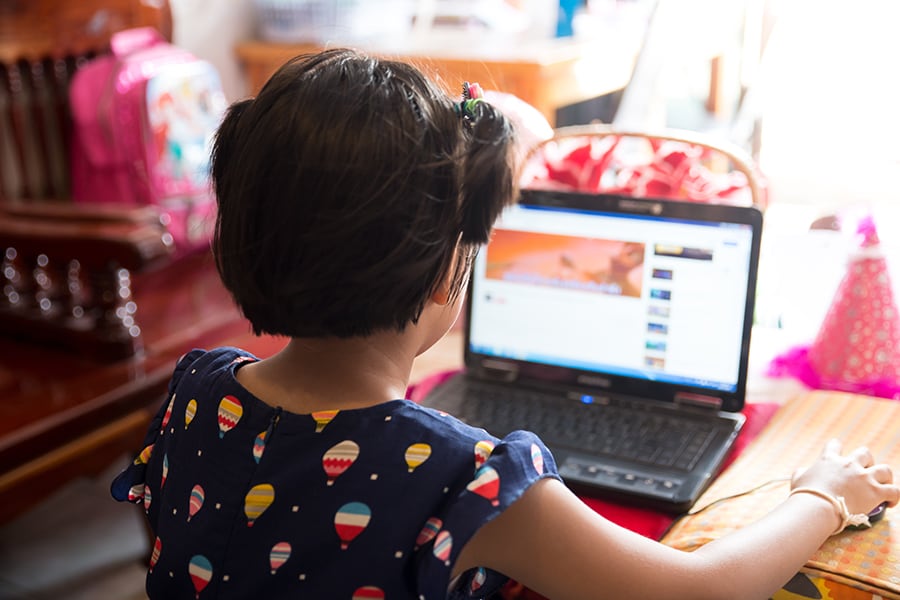Regular classes go online: Behind the screens
Colleges may relook at their expectations of what a typical college / school day looks like. Instead of a full day, perhaps reduce the number of classes and finish early


 Image: Shutterstock
Image: Shutterstock
‘Harish was home from college after it closed down post the Corona virus pandemic warning. He looked around as he waited for his morning classes to start online. This was day 4 since these classes had started and he knew he couldn’t sustain it. For him to attend these, his family had to stay quiet in the small house for 8 hours and dedicate one full room for him. He had to ask his siblings to go low on internet usage and his grandparents to do their puja early in the morning. The family was already under stress and he felt he was adding to the discomfort’.
‘Reena sat at her dining table, it was 4 am and she was preparing the teaching plan for the day. She is a class 8 teacher in an international school. The school had been closed a week, ever since the government instructions regarding Corona Virus had come in. She had 4 hours to prepare herself before school started online. This was the only time she got before the household woke up. She had to also clean, cook lunch and make sure the kids were up, fed breakfast so that they wouldn’t interrupt her before her lunch break. Her husband would be in video conferencing the whole day, holed up in one bedroom. She had to somehow get the kids in front of TV, keeping her fingers crossed, hoping that neither got bored nor hurt, which could take her away from her online classroom. She missed her house help, who had been asked to stay away for social distancing. It had been a tough week and she knew she was struggling.’
Over the last few weeks, many schools and colleges have embraced online teaching. The focus has been on the speed at which they could get students online, socializing best practices in teaching while ensuring that the academic integrity is upheld. These institutions have been able to quickly set up the technology and train teachers. Some of them have been able to achieve this over a weekend. Most teachers have responded well and have shared early experiences in teaching styles that work online. More software is being explored to handle exams and submissions.
We must stand up and applaud the efficient way in which most colleges and schools have embraced this change. However, one may now also like to take a pause, to see behind the screens, to get the full picture. Harish and Reena are just 2 stories highlighting a few challenges that some students and teachers would be facing.
Perhaps it is not just about taking the offline courses online in the most efficient manner. Perhaps it is not just about bringing a classroom environment into home in the most seamless way. It is not even just about tweaking the content of a course for a channel which is anyways alien to most teachers. It is about stepping back, and also embracing the realities and realizing that some students and teachers are working in below normal conditions.
Courses designed for a normal (offline) delivery take into account a media rich environment with peer interactions, group work and a commanding presence of the teacher. Both the student and the teacher are able to sustain a long class duration and a long day, before fatigue starts setting in and the ability to be attentive and to absorb knowledge starts to fail. Home environment is different. There are parents, children and others, whose presence also demands space. There are constraints like low internet speed. An ecosystem that enables the normal functioning of a household is being ill-supported with limited or no help available.
Maybe the expectations from both teachers and students can be pared down a notch and allow for the fact that the impact is on the whole family. The call for the institutes is not to only focus on making the teaching experience better but also on making the learning experience more palatable. It would require taking stronger steps.
Colleges may relook at their expectations of what a typical college / school day looks like. Instead of a full day, perhaps reduce the number of classes and finish early. Maybe even reduce the duration of a class. The courses may need to be whittled down to a smaller version from the original outline. It may require changing the rubrics of the evaluations. Certain courses may have to be deferred to next year or be removed entirely.
One may believe that students must build an ability to adapt and teachers must rise up to a challenge. However, it is important to understand that it is not really about the student or the teacher on the screen but the whole family behind that is impacted. It is not about sitting in a world where the internet broadband promises unlimited, high speed browsing, where every family member has own room and the ecosystem functions well. It is about those students and teachers like Harish and Reena who are truly struggling to keep up.
This would mean not focusing only on the efficiency of taking classes online. It would need a more courageous outlook which is based on an understanding of the multiple challenges and compassion towards the different realities. It would mean stepping back and reset the mindset, to focus on what is most workable in a situation as unusual as this.
It is perhaps not just about doing things right but also doing the right things.
About the writer:
Professor Ratika Gore teaches Communication and Design Thinking at Bhavan’s SPJIMR. She is also the Head of Alumni Relations and Mentor for Career Development Services. Her views are her own and not endorsed by the organisation
First Published: Apr 02, 2020, 09:48
Subscribe Now